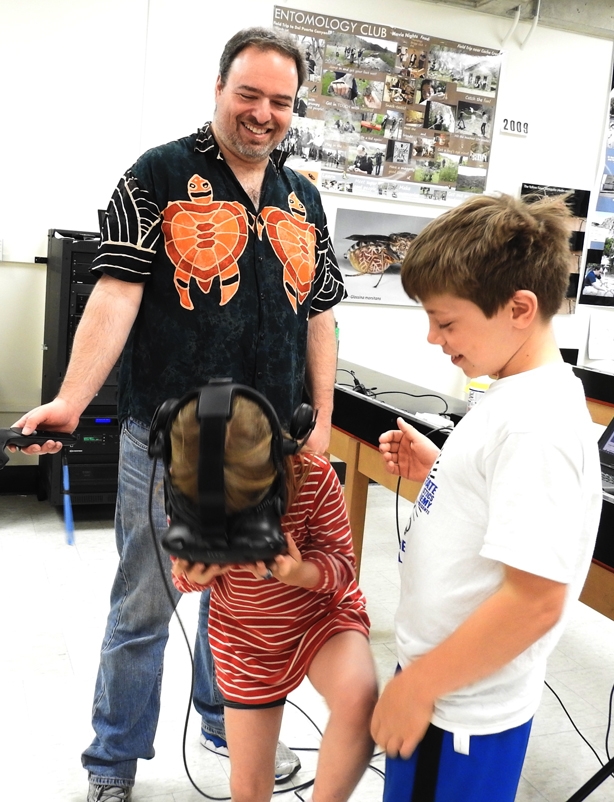
And that it did Saturday at the 105th annual UC Davis Picnic Day--especially at the second annual "Virtual Reality Bugs" display at Briggs Hall, the administrative home of the UC Davis Department of Entomology and Nematology.
Medical entomologist/geneticist Geoffrey Attardo, an assistant professor in the department who researches tsetse flies, mosquitoes and other vectors, demonstrated his program all day to hundreds of participants.
They marveled at the 40-foot-tall, three-dimensional insects and spiders. They chose what they wanted to see towering over them: a black widow spider, ant, beetle, grasshopper, damsel fly, cicada, cockroach, and a tsetse fly.
What's a picnic without bugs?
Sebastian Ehrlich, 9, and his sister Kamila, 6, of Davis, accompanied by parents Ethan and Carolina Ehrlich, were among the first in line.
They loved Virtual Reality Bugs.
"My kids' favorite part of Picnic Day was the VR," their mother said. "Oh how I'd love it if one of them at least became a scientist."
Paul McClelland of Sunnyvale, a UC Davis graduate in zoology (1983), and his wife, Marjirjam, also delighted in seeing the gigantic bugs--and the computer and display techniques that made the display possible.
"They didn't have that when I was going to school," McClelland quipped.
Attardo describes VR as a "computer-generated simulation used to simulate real or imagined environments."
"It immerses the user by stimulating visual, auditory and touch-based senses," he says. He presented a program on "Using Virtual Reality to Engage and Instruct: a A Novel Tool for Outreach and Extension," at the 2018 Entomological Society of America (ESA) meeting in Vancouver, B.C.
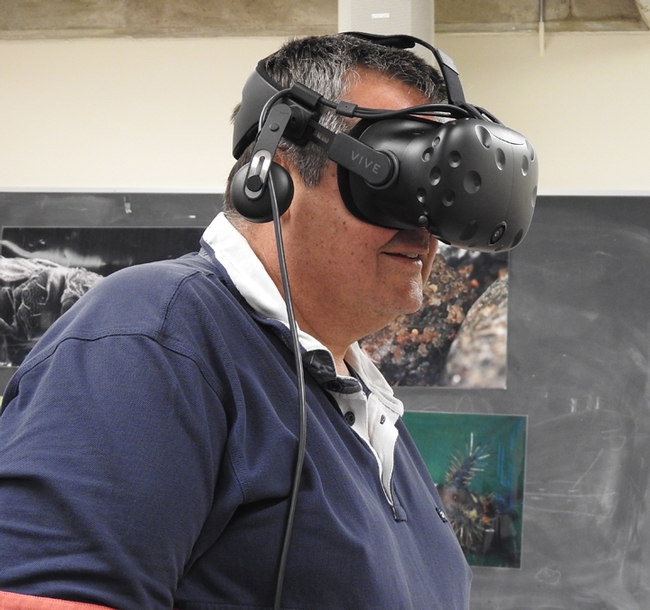
Attardo's sketchfab.com account is at https://sketchfab.com/models/263750e5a9c54c56a77d63ac06f2f317. His first model was a tsetse fly.
Attardo says that "VR has great potential as a new way to present entomological content including aspects of morphology, physiology, behavior and other aspects of insect biology. This demonstration allows users of all ages to view static and animated 3D models of insects and arthropods in virtual reality."
"This is accomplished by placing users in virtual spaces with content of interest and allows for natural interactions where users can physically move within the space and use their hands to directly manipulate/experience content. VR also reduces the impact of external sensory distractions by completely immersing the user in the experience. These interactions are particularly compelling when content that is only observable through a microscope (or not at all) can be made large allowing the user to experience these things at scale. This has great potential for entomological education and outreach as students can experience animated models of insects and arthropods at impossible scales."
In his presentation to ESA, Attardo commented: "This isn't your parents' virtual reality! Early computers and monitors could not produce the frame rate/resolution required. Early attempts at VR were heavy, awkward and motion-sickness inducing. Increased processing power, smaller computers and high resolution screens have solved these issues."
As McClelland said, "They didn't have that when I was going to school."
Attached Images:
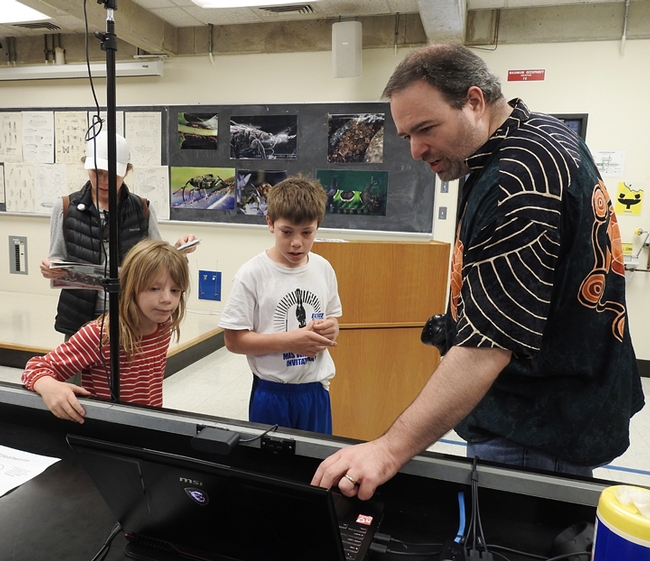
UC Davis medical entomologist Geoffrey Attardo shows Sebastian and Kamila Ehrlich examples of what insects they might want to see in virtual reality. In back is their mother, Carollina Ehrlich. (Photo by Kathy Keatley Garvey)
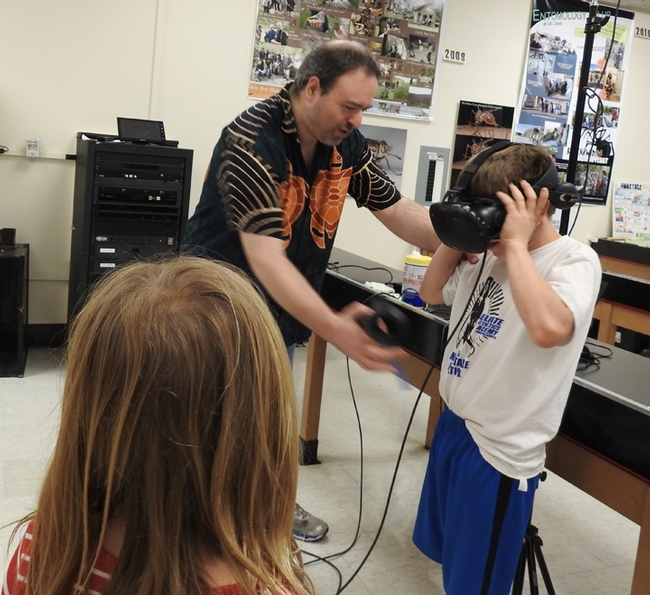
Sebastian Ehrlich enjoying the session. (Photo by Kathy Keatley Garvey)
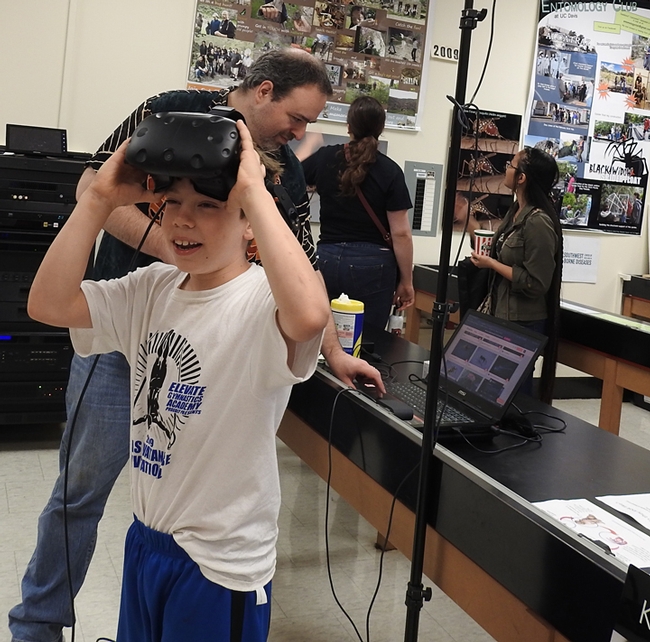
"That was cool!" Sebastian Ehrlich removes the headset. (Photo by Kathy Keatley Garvey)
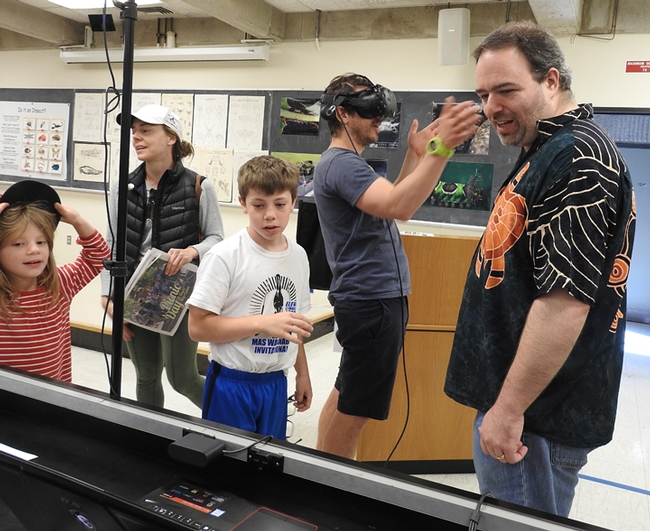
Dad Ethan Ehrlich (background) reacts to the 40-foot-tall bugs. With him are wife Carolina, children Sebastian and Kamila, and UC Davis medical entomologist Geoffrey Attardo. (Photo by Kathy Keatley Garvey)
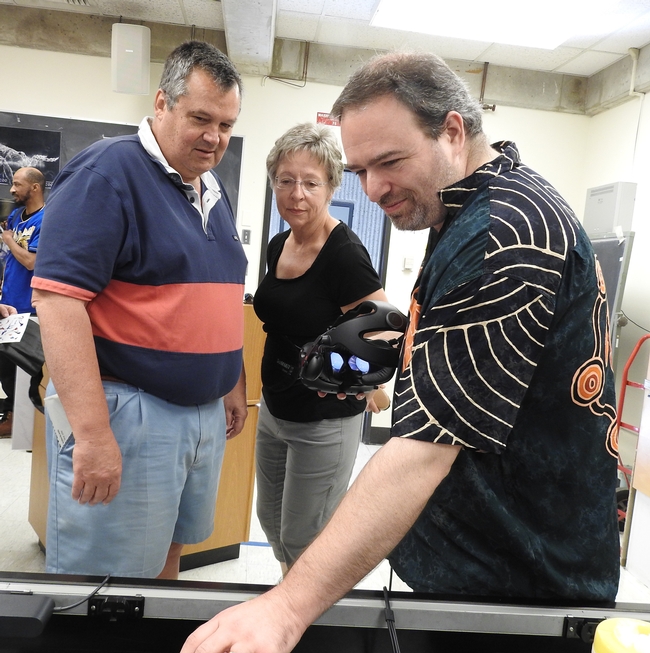
UC Davis alumnus Paul McClelland (zoology)of Sunnyvale selects what insect he wants to see in virtual reality. With him are his wife Marmirjam and UC Davis medical entomologist Geoffrey Attardo. (Photo by Kathy Keatley Garvey)
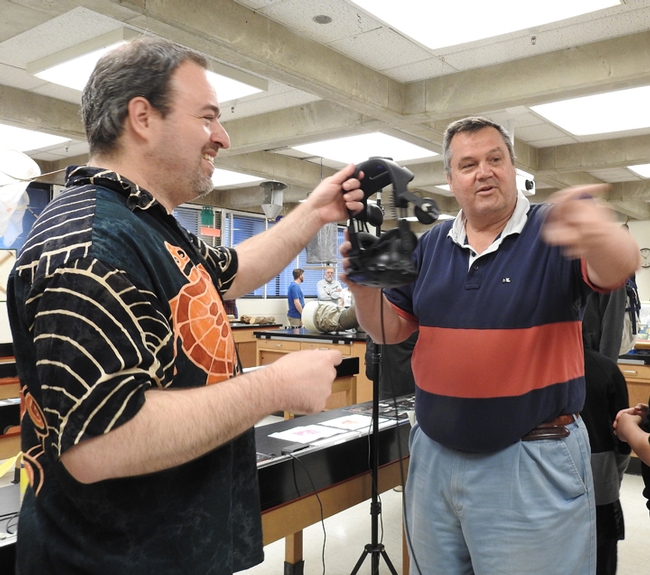
"That's fascinating!" said Paul McCelland, as he hands off the headphones to another member of his party. (Photo by Kathy Keatley Garvey)